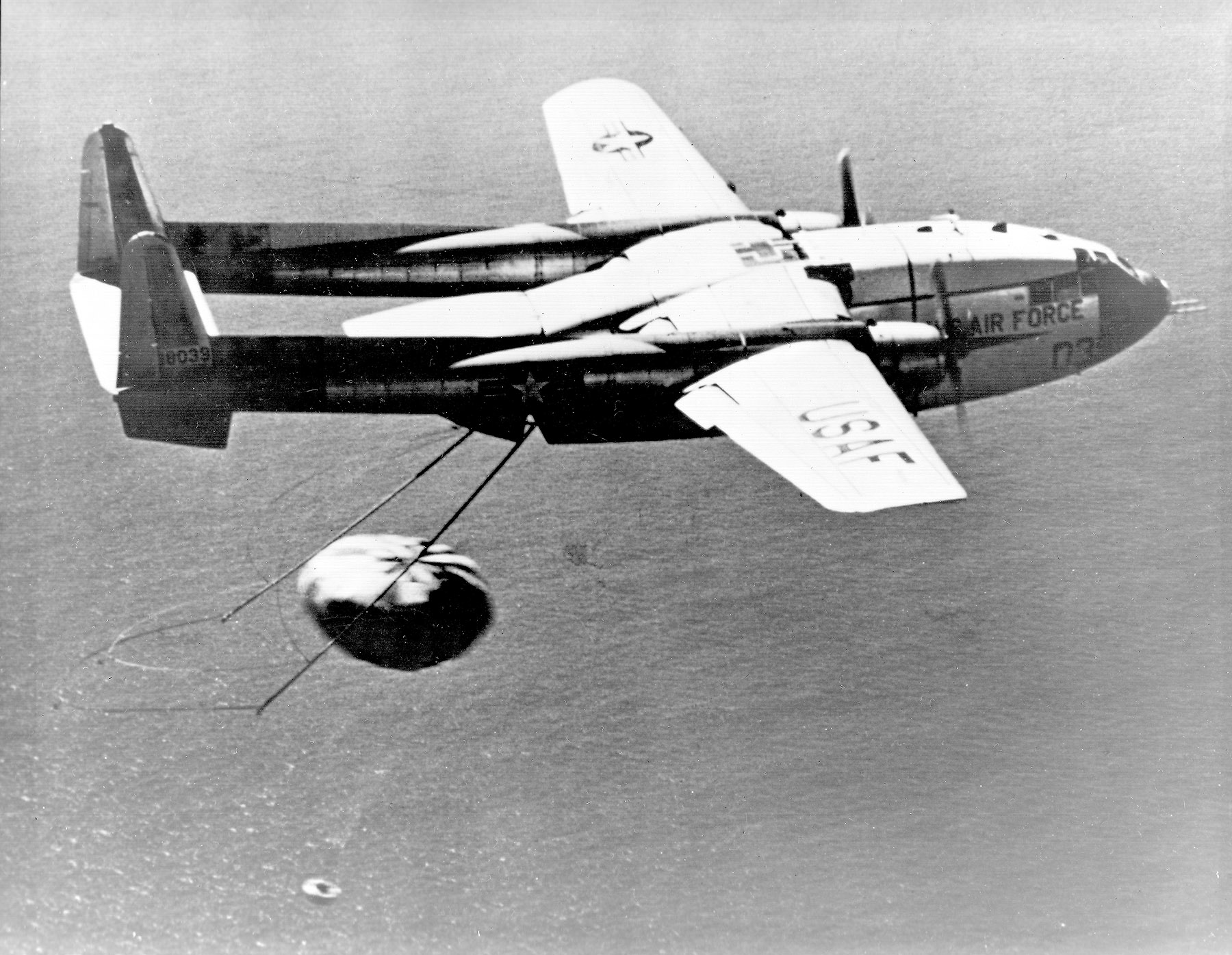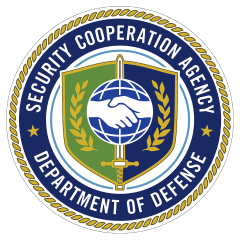Install the app
How to install the app on iOS
Follow along with the video below to see how to install our site as a web app on your home screen.
Note: This feature may not be available in some browsers.
You are using an out of date browser. It may not display this or other websites correctly.
You should upgrade or use an alternative browser.
You should upgrade or use an alternative browser.
F-35 Lightning II
- Viestiketjun aloittaja Hejsan
- Aloitus PVM
F-35 vastustajat kusee hunajaa kun sitä moukaroidaan nyt random paskakommenteilla. Sanojat on vain vähän turhan isokenkää. Toki Millerin tapauksessa kertoo ehkä nimittäjänsä kyvyistä valita.
 aviationweek.com
aviationweek.com
Acting SecDef Criticizes Lingering Cold War Acquisition Mindset | Aviation Week Network
Reflecting on his time as acting U.S. defense secretary, Chris Miller wishes he had time to tackle the Pentagon’s acquisition system, and would use the F-35 as the case study of what not to do.
Viimeksi muokattu:
Täysi latvalaho.
Entinen SACEUR Stavridis tylyttää.
Entinen SACEUR Stavridis tylyttää.

How do you fix a flying computer? Seeking resilience in software-intensive mission systems
Defense organizations confront unanticipated and highly impactful disruptions, but must continue to operate using complex mission systems.

Roper Hints NGAD Could Replace F-35; Why? Life-Cycle Costs - Breaking Defense
The NGAD program "represents a chance to design an airplane that is more sustainable than the F-35, if in fact the F-35 cannot get its cost-per-flying-hour down," said outgoing AF acquisition head Will Roper.
WASHINGTON: The F-35 fighter jet’s exorbitant life-cycle costs means the Air Force cannot afford to buy as many aircraft as it needs to fight and win a war today, which makes the Next-Generation Air Dominance (NGAD) program all the more important, says outgoing Air Force acquisition czar Will Roper.
“I think the F-35 program is a long way from being at a sustainment point that we need. I think it’s a long way from being an affordable fighter that we can buy in bulk,” he told reporters today.
“That’s the reason why Next-Generation Air Dominance is so important to the Air Force,” he said. “It doesn’t just represent a next-generation fighter with bells and whistles that we will need in warfighting. It doesn’t just represent a completely different acquisition paradigm. It also represents a chance to design an airplane that is more sustainable than the F-35 if, in fact, the F-35 cannot get its cost-per-flying-hour down.”
Roper would not be drawn on whether the Air Force was considering downsizing it plan to build a total inventory of 1,763 F-35s — with the Air Force requesting 48 aircraft in 2021, and planning to ask for the same annual buy for the foreseeable future, according to a study last month by the Center for Strategic and International Studies. “But what I can say is we’re not at the sustainment price point we need to be for a very large fleet. So, the next few years are critical for the F 35 program,” he added.
He seemed to suggest that, all things considered, perhaps the answer is to turn to NGAD to more rapidly build a wartime-fit fighter fleet.
“I very much hope for the future of the program, but I wouldn’t be doing my job if I didn’t prepare for the worst. And so you can see that the movements that we have made in the TacAir portfolio have set the Air Force up to have options, so that our eggs are not in one proverbial basket,” he said.
Roper explained that Air Force fighters have to be ready to establish air dominance on day one of a war (along with satellites to secure establish communications.) “If they don’t win the day, then there will be no time for the rest of the services to join.” This is why the quantity of F-35s available matters, he said, as well as the quality of its capabilities.
“As to the quality, I think everyone feels pleased as the F-35 goes through testing, but it’s very much focused on Block Four as the next step that has to be taken. Quantity goes directly to whether the cost-per-flying-hour can come down,” he said. “And right now the F-35 has a good ‘sticker price,’ but its cost of ownership is not where it needs to be, making the quantities that the Air Force may need to purchase in question.”
Prime contractor Lockheed Martin’s ongoing Block 4 update includes both hardware and software to enable the aircraft with faster computers, more missiles, a panoramic cockpit display, longer ranges, as well as the capability to team with drones. But the Government Accountability Office found a $1.5 billion increase in the F-35’s Block 4 upgrade costs for 2019 — now up to $12.1 billion. On top of that, the update has experienced numerous delays. Indeed, GAO begged to differ on the quality issue: “The F-35 aircraft in the field have not met standards for reliability and maintainability, indicating that the program is not delivering aircraft at the level of quality expected,” the report said.
“Work on Block 4 upgrades continues and will bring more capability to the warfighter through an agile development process based on incremental software upgrades, providing continuous improvements and further widening the gap over legacy platforms,” a Lockheed Martin spokesperson said in an email.
That question about affordability, in turn, “is why,” Roper said, “other tactical aviation options are appealing to have in the mix, so that the Air Force has options number one; and number two, there’s competition, there’s pressure, on industry to improve, which would not be there if there was only one show in town.”
Lockheed Martin “understands the importance of F-35 affordability, both with regard to production and sustainment, and is focused on offering this unmatched capability at a cost similar to that of legacy aircraft,” the spokesperson said. “We are currently delivering F-35s at or below the cost of less capable fourth generation aircraft, while also lowering the sustainment costs by 40% over the past five years.”
Roper said fixing the F-35’s myriad issues requires the Air Force, its software development teams, the Joint Program Office, and Lockheed Martin all “to run the same direction and at the same pace to make a difference.” He reiterated that the service’s top software hub, Kessel Run, is “fully dedicated to helping on the sustainment of the system.” Kessel Run is working a replacement for Lockheed Martin’s long-troubled Autonomic Logistics Information System (ALIS) used to track parts and schedule maintenance, called ODIN (for Operational Integrated Data Network.)
“I’ve made a lot of the Air Force available, above and beyond the normal call of duty, to the program,” he said.
Long-time aviation analyst Richard Aboulafia said that, while “the 1,763 USAF F-35A number has always been one of the stranger fictions in defense procurement” because the Air Force simply can’t afford that many no matter what, it’s way too early to count on NGAD as a replacement.
“Basically, they can afford about 50 a year, given competing priorities, and assuming 20-25 years at that rate, the likely total is around 1,000-1,200,” he said in an email. “There are big variables, particularly regarding the next combat aircraft to enter procurement. Flying NGAD prototypes may or may not tell us something about that. We’ll need to learn more about how long it will take to missionize and get ready for production and service. But the idea that F-35 procurement could ramp down to divert cash for a Digital Century Series sounds very flawed to me.”
Viimeksi muokattu:
Mikäli yläpuolinen juttu pitää paikkaansa ja on luotettavaa tietoa edes suuntaa antavasti, kuulostaisi siltä että meillä saattaa vaakakuppi kääntyä Super Hornetille tai Rafalelle.
Tosin se, että se liputtaa niin vahvasti NGAD puolesta vihjaa, että olisi muuten vain löysää puhetta. Sillä sehän on fantasiaa päätellä miten sen valmistumisen ja käyttökulujen osalta käy. F-35:n on kaiketi pakko korvata itseään vanhemmat konetyypit suurelta osin, jotta voidaan edes odotella jotain 10 vuotta nykyhetkestä valmistuvaa.Mikäli yläpuolinen juttu pitää paikkaansa ja on luotettavaa tietoa edes suuntaa antavasti, kuulostaisi siltä että meillä saattaa vaakakuppi kääntyä Super Hornetille tai Rafalelle.
Voihan se olla, että HX arvioi F-35:n olevan niin kallis, ettei Suomella ole ensimmäisenä sitä punninneista varaa. Hyvä sinänsä, että on muista poiketen Growler johon tarrata. Tai kelpo Rafale.
Ja sanoisin, että jos ei olla suurin piirtein 90-prosenttisesti ainakin varmoja että se F-35 mahtuu käyttökustannuksiltaan tuohon 250 miljoonan euron suuruusluokkaan, en ottaisi riskiä vaan valitsisin Super Hornetin ja Growlerin.Tosin se, että se liputtaa niin vahvasti NGAD puolesta vihjaa, että olisi muuten vain löysää puhetta. Sillä sehän on fantasiaa päätellä miten sen valmistumisen ja käyttökulujen osalta käy. F-35:n on kaiketi pakko korvata itseään vanhemmat konetyypit suurelta osin, jotta voidaan edes odotella jotain 10 vuotta nykyhetkestä valmistuvaa.
Voihan se olla, että HX arvioi F-35:n olevan niin kallis, ettei Suomella ole ensimmäisenä sitä punninneista varaa. Hyvä sinänsä, että on muista poiketen Growler johon tarrata. Tai kelpo Rafale.
Sillä mitä sitten tehtäisiin, jos F-35 vaatisikin 400 milliä. Olisi poliittinen itsemurha vaatia lisärahaa puolustusbudjettiin, kun vuosikausia on teroitettu HX-hankeelle että HX:n pitää mahtua kymmenykseen puolustusbudjetista. Ja rahan ottaminen maa - ja merivoimilta F-35:n ylläpitoon taas romahduttaisi maa - ja merivoimat.
Mutta itse kyllä uskon, että F-35 valitaan ja se pystytään saamaan kustannusraamien sisälle sillä että hankittava määrä on n. 55 ja kaikki kustannusten suhteen optimoidaan viimeisen päälle.
Huhta
Greatest Leader
Ja sanoisin, että jos ei olla suurin piirtein 90-prosenttisesti ainakin varmoja että se F-35 mahtuu käyttökustannuksiltaan tuohon 250 miljoonan euron suuruusluokkaan, en ottaisi riskiä vaan valitsisin Super Hornetin ja Growlerin.
Sillä mitä sitten tehtäisiin, jos F-35 vaatisikin 400 milliä. Olisi poliittinen itsemurha vaatia lisärahaa puolustusbudjettiin, kun vuosikausia on teroitettu HX-hankeelle että HX:n pitää mahtua kymmenykseen puolustusbudjetista. Ja rahan ottaminen maa - ja merivoimilta F-35:n ylläpitoon taas romahduttaisi maa - ja merivoimat.
Mutta itse kyllä uskon, että F-35 valitaan ja se pystytään saamaan kustannusraamien sisälle sillä että hankittava määrä on n. 55 ja kaikki kustannusten suhteen optimoidaan viimeisen päälle.
Käyttökustannuksethan ovat aina sidoksissa käyttöön. Jos F-35 on sellainen kuolontähti kuin väitetään, niin sillä ei tarvinne lentää läheskään yhtä paljon kuin SH:lla, jotta siitä saa saman verran suorituskykyä irti kuin SH:sta.
Vähän sama juttu kuin että nuori Rovanperä nykyaikaisessa WRC-autossa ajaa luultavasti tiukemman ajan kuin Mäkinen museorekisterissä olevassa Mini Cooperissa. Kalustolla voi paikata taitoa ja taidolla kalustoa. Johonkin rajaan asti.
Kyky tuottaa lentosuoritteita x taistelunkestävyys on yksi hyvin yksinkertaistettu näkökulma. Niitä kierroksia kun ajaa sotapelissä läpi niin erot kertaantuu äkkiä.
Tosin onhan se heti paljon monimutkaisempi kun hetken miettii. Suurin osa suorituskyvystä tulee aseista eikä pelkästään tilannekuvasta ja maalituksesta. Joten heikomman selviytymiskyvyn koneiden pakon edessä käyttämät kalliimmat ja harvalukuiset täsmäaseet voi loppua vaikka itse koneet selviäisi takaisin.
Tosin onhan se heti paljon monimutkaisempi kun hetken miettii. Suurin osa suorituskyvystä tulee aseista eikä pelkästään tilannekuvasta ja maalituksesta. Joten heikomman selviytymiskyvyn koneiden pakon edessä käyttämät kalliimmat ja harvalukuiset täsmäaseet voi loppua vaikka itse koneet selviäisi takaisin.
Rauhan aikana? Mitä lentoja voi karsia, kun F35 on niin suorituskykyinen?Käyttökustannuksethan ovat aina sidoksissa käyttöön. Jos F-35 on sellainen kuolontähti kuin väitetään, niin sillä ei tarvinne lentää läheskään yhtä paljon kuin SH:lla, jotta siitä saa saman verran suorituskykyä irti kuin SH:sta.
fulcrum
Greatest Leader
Eikö USAF hehkuttanut että 5 vuoden välein otetaan käyttöön uusi hävittäjätyyppi...?Tosin se, että se liputtaa niin vahvasti NGAD puolesta vihjaa, että olisi muuten vain löysää puhetta. Sillä sehän on fantasiaa päätellä miten sen valmistumisen ja käyttökulujen osalta käy. F-35:n on kaiketi pakko korvata itseään vanhemmat konetyypit suurelta osin, jotta voidaan edes odotella jotain 10 vuotta nykyhetkestä valmistuvaa.
USAFin nykyinen hankintasuunnitelma F-35:lle ulottuu ainakin vuoteen 2035. Jos joku uusi tyyppi tulee (Ilmavoimien 'NGAD' on ilmeisesti eri kone kuin laivaston 'NGAD') niin se voi vaikuttaa suunnitelmiin. Soppaa sotkee myös F-15X.
No sehän nyt on päivänselvää, ettei oteta.Eikö USAF hehkuttanut että 5 vuoden välein otetaan käyttöön uusi hävittäjätyyppi...?
Huhta
Greatest Leader
Rauhan aikana? Mitä lentoja voi karsia, kun F35 on niin suorituskykyinen?
Rauhan aikana rauhan aikana. Harjoituslentoja voi karsia. Niin on tehty aiemminkin säästöjen saamiseksi.
fulcrum
Greatest Leader
Niin voisi luulla, mutta vakuuttivat että totta on...No sehän nyt on päivänselvää, ettei oteta.
Ja vastikäänhän kerrottiin uuden prototyypin/demonstraattorin ensilennosta.
fulcrum
Greatest Leader
Voihan niitä harjoituslentoja karsia kaikilla koneilla. Eikai se ole mikään F-35 -spesifinen juttu.Rauhan aikana rauhan aikana. Harjoituslentoja voi karsia. Niin on tehty aiemminkin säästöjen saamiseksi.
Huhta
Greatest Leader
Voihan niitä harjoituslentoja karsia kaikilla koneilla. Eikai se ole mikään F-35 -spesifinen juttu.
Yläpuolella pohdittiin, että mitä jos F-35:llä lentäminen maksaakin 400 miljoonaa eikä 250 miljoonaa. Se on liikaa yksinkertaistettu tapa esittää asia, kun käyttökustannus ei suinkaan ole vakio tietylle määrälle tiettyä konetyyppiä.
Ts. en lähtisi vertailemaan HX-ehdokkaiden mahtumista käyttöbudjettiin olettaen kaikilla konetyypeillä lennettävän saman verran vuodessa. Vuotuisten lentotuntien määrä ei voi olla itseisarvo. Jos olisi, lentäisimme pelkillä Hawkeilla.
Hetkinen....
Tämähän taitaa selittää sen miksi sekä ODIN että ALIS oli Suomen DSCA-pyynnössä.
Ei muuten ollut Sveitsillä.

 seapowermagazine.org
seapowermagazine.org
Tämähän taitaa selittää sen miksi sekä ODIN että ALIS oli Suomen DSCA-pyynnössä.

Ei muuten ollut Sveitsillä.


The ODIN Shipboard Laser: Science Fiction No More - Seapower
The ODIN Shipboard Laser: Science Fiction No More Featured Story

